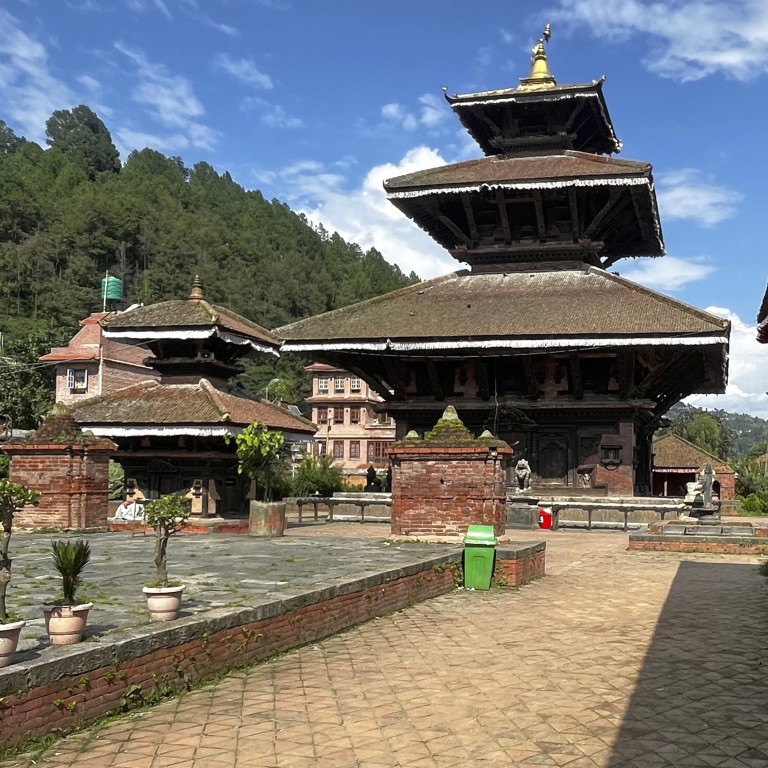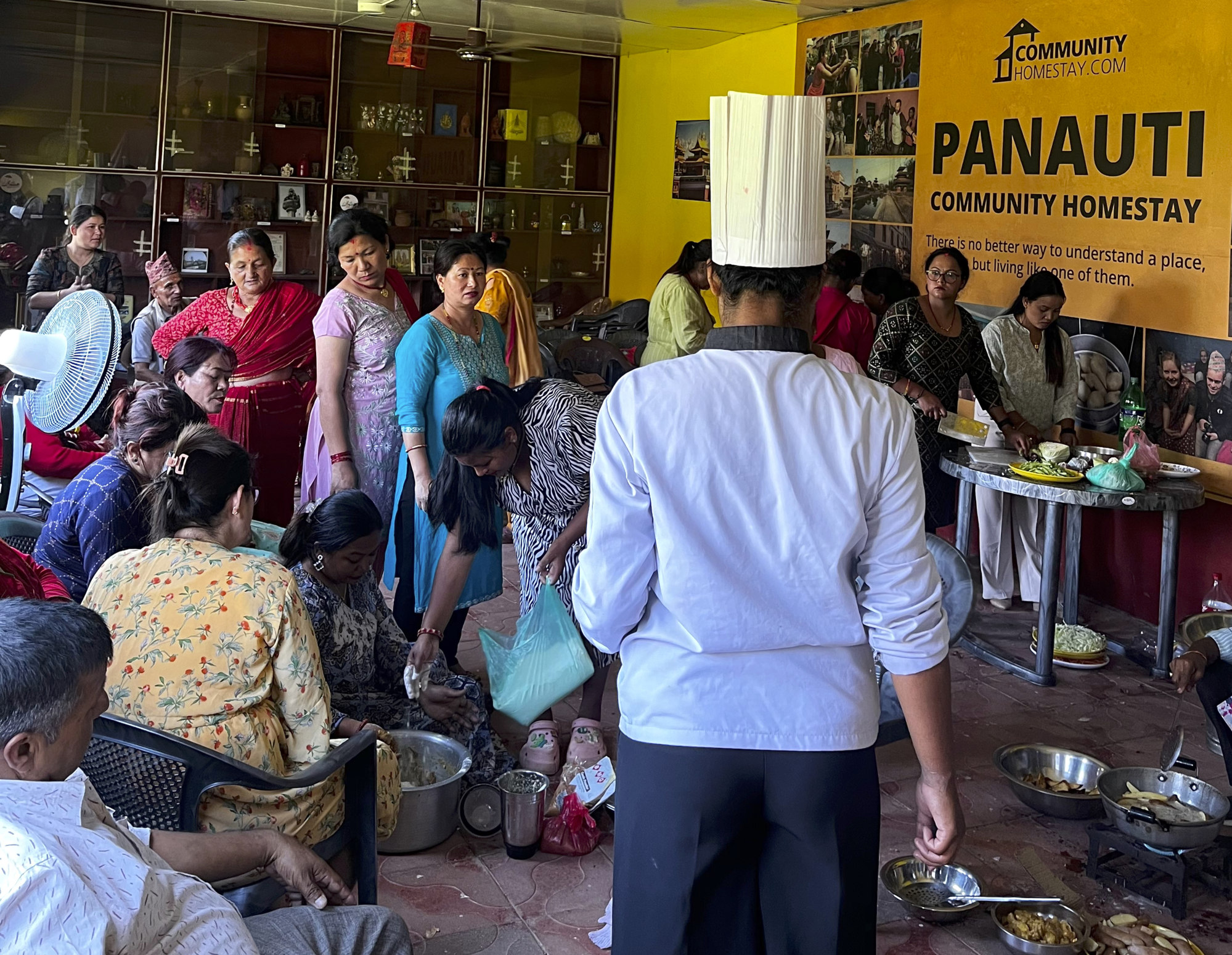
In Nepal, homestays offer tourists food, culture, history while empowering locals and women
- A growing network of homestays is aiming to promote lesser-known, culturally-rich destinations that hotels cannot match
- It not only helps ‘develop destinations’ but also enables women in small towns to support their families without being ‘limited to our kitchens any more’
When Shila Amatya opened her home to tourists nearly 15 years ago, it was a novel concept, frowned upon by neighbours. Today, the 44-year-old leads a community of 17 homes in the historic Nepali town of Panauti, providing both foreign and domestic visitors an alternative to hotels.
Amatya’s home is part of a growing network of community homestays offering visitors homely accommodation and a chance to stay with locals. Such lodgings aim to promote lesser-known but culturally-rich destinations in Nepal’s villages and smaller towns, while enabling local communities to benefit.
Since lifting all Covid-related travel restrictions in June and with the nation’s visitor levels near pre-pandemic levels, community homestays are eyeing a slice of a tourism industry that accounted for around 6.7 per cent of Nepal’s gross domestic product in 2019 and supported over a million jobs. More than 534,000 tourists visited Nepal between January and July this year, about 110,000 fewer than the same period in 2019.
Nepali food is ‘unique, flavourful’ but unknown. This chef wants to change that
“We are open for business and expecting more guests than before Covid,” said Amatya, adding that Panauti, a sleepy settlement some 30km southeast of the capital Kathmandu, served around 3,000 homestay guests in 2019.
“We have added more houses now. Guests like our ancient town, local home-cooked meals and shared activities like cooking and hiking. Hotels don’t have the same experience as homestays.”
Community homestays first started to appear in Nepal in the late 1990s, with Sirubari – a village known for its stunning backdrop of the Annapurna mountain range and local Gurung culture – being the first to make the leap. But it took more than a decade to develop a standard operating guideline for homestays, ahead of the 2011 launch of a national tourism campaign that aimed to attract 1 million foreign visitors.
The Homestay Federation of Nepal estimates there could be around 1,500 community homestays across the country, though only about 600 are officially registered with the organisation. To start a homestay business and enjoy the economic opportunities that owners say they bring, a community needs at least five households, the federation says.

Untapped potential
Tourism experts believe there’s much untapped potential in the hundreds of homestays that already exist across Nepal. Many are located around major trekking trails or national parks and could be added to tourist itineraries. Experts say the experience of staying with local families helps to familiarise foreigners with the country’s different ethnic groups, as well as their food, culture and history.
“Homestays have also helped develop destinations,” Nepal Tourism Board Director Mani Raj Lamichhane told This Week in Asia, referring to places like Chitlang, Ghandruk and Sirubari that have proved popular with both foreigners and locals. “We should now focus on homestays in villages with no hotels.”
Realising this commercial potential, private enterprises like the Community Homestay Network have entered the market. Since its launch in 2017, the network now covers 36 communities in different parts of Nepal, operating in a similar fashion to an online travel retailer that connects prospective clients with homestay hosts.
There is a new emerging market that wants to explore different sides of Nepal other than just adventure
Community Homestay Network CEO Aayusha Prasain said homestays allow local communities to benefit from mass tourism, diversify their incomes and develop new destinations.
She cited those in Narchyang, a village along the Annapurna trekking trail, which provide an alternative to crowded hotels and a give visitors the opportunity to experience the hospitality of the local Magar community.
“There is a new emerging market that wants to explore different sides of Nepal other than just adventure,” she said. “There’s also this narrative that homestays are cheaper accommodation, but they’re an experience.”

Hosts working with the Community Homestay Network expect to receive around 2,220 guests this year – slightly higher than in 2019. That number is forecast to reach 5,000 by 2025.
In Nagarkot, a hill station outside Kathmandu, Suraj Bastola is part of a 10-home community homestay. He said homestay investments have long term potential as they help generate employment, encourage local agriculture and lead to the development of leisure activities, ultimately benefiting locals.
As people usually convert unused rooms or empty homes into homestays and use them as a secondary source of income, Bastola, who is also the treasurer of the Homestay Federation of Nepal, said the sector had suffered less from the pandemic than Nepal’s tourism industry as a whole.
“We weren’t at a loss,” he said. “We used that time to innovate and renovate to improve our services. We now also run a homestay school to train people to open such facilities and help them understand government policies.”
Empowering communities
The 17 homestays in Panauti that Amatya leads in partnership with Community Homestay Network are run by an all-women team. Amatya said they were initially shy and hesitant to host guests, but after a few English classes, they are now able to communicate with foreign visitors and are more confident in doing business.
“We’re just not limited to our kitchens any more,” Amatya said. “For unemployed women, homestays have provided a crucial means of becoming financially independent and paved a way for us to become entrepreneurs, while supporting us to run our households.”
According to a 2020 study co-published by Nepal’s tourism ministry, homestays have contributed to women’s empowerment and account for nearly 15 per cent of household incomes. Amatya said each household can make up to 50,000 rupees (US$371) a month during peak tourist seasons in spring and autumn, and about 15,000 rupees at other times.
Nepal’s forests and trees bloom under ‘honest, transparent’ female bosses
Tourism experts say that homestays, as community-led projects, also foster a sense of ownership and the will to succeed. This benefits not just homestay hosts, but others who are indirectly associated with the service, such as local farmers and tour guides.
Biju Saiju, a single mother of two daughters, said she had turned two rooms in her three-storey house into homestay accommodation eight years ago, following in Amatya’s footsteps. While initially chastised by neighbours for bringing foreigners into her home, she said people have become more acceptive of the business, which she runs alongside a convenience store located on the ground floor of her house.
Anxious about hosting her first-ever guests from the Netherlands, Saiju told This Week in Asia she had gradually learned to answer basic questions in English about the food she cooks for visitors. She said the extra income had also helped to educate her daughters at good schools and take care of her in-laws.
“Some people have returned to stay at my place,” she said, showing a photo album of dozens of guests she has hosted so far. “It makes me happy and confident of the work I’m doing.”

Room for improvement
While homestays are expanding, the 2020 study found that their capacity and facilities are being “underutilised”. It said “the overall annual average occupancy is low, though it varies greatly from community to community”.
Tourism experts say Nepal lacks coordinated branding and marketing initiatives to promote homestays and the government should prioritise them in its tourism campaigns. Currently, many community homestays either receive guests through private tour operators, where they are listed or have personal connections, or through self-promotion on social media.
Homestay host Bastola agreed that the level of promotion was inadequate at present. He estimated that of the hundreds of homestays, only about 200 might be doing good business.
“It’s a sad reality,” he said. “Our homestays are ready, but how do we ensure all of them have guests?”
Nepali food is ‘unique, flavourful’ but unknown. This chef wants to change that
Many community homestays are known to have shut down in recent years, though the exact numbers are unavailable. Experts say there is also a gap in monitoring and evaluation from the authorities, resulting in lack of standardisation, possible misappropriation of funds and closures.
“Many people opened homestays just because they saw certain communities benefiting from it,” said Sandip Adhikari, an alternative tourism specialist with the Ministry of Culture, Tourism and Civil Aviation. “You can’t succeed by imitating others but need to offer your own unique products that are relevant to your culture to attract guests.”
To better regulate the market, the Homestay Federation of Nepal is piloting a three-level classification system in Gandaki province, home to popular destinations like Pokhara, Ghandruk and Sirubari. Classification criteria include the number of years the homestay has been in operation, guest numbers and availble infrastructure.
Prasain from the Community Homestay Network believes a combined push from both private and public sectors would help homestays emerge as a unique sustainable tourism product that can contribute to the national economy and local communities.
“Community tourism doesn’t have to be a niche market,” she said. “We can broaden it. Travellers can include homestays as part of their itineraries. It’s a good way to give back to the community.”



